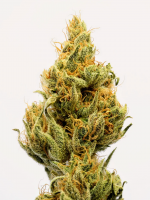acespicoli
Well-known member
Apicius, also known as De re culinaria or De re coquinaria (On the Subject of Cooking), is a collection of Roman cookery recipes, which may have been compiled in the fifth century CE,[1]Don't forget garum! Fermented fish gut sauce. You have to use the guts for their flora.
"Pliny the Elder was one of the first to define garum — which he called an “exquisite liquid” — as “a choice liquor consisting of the guts of fish and the other parts that would otherwise be considered refuse.”
This as the translated from Latin cookbook where the roman fish sauce is used maybe I saw some earlier
Im already there with you as a home chef and a gardner
 the virtues of fish sauce
the virtues of fish sauce A purveyor of fine things now I see we have also a similar interest in medicine
Hippocrates: “Let food be thy medicine and medicine be thy food”
Hiroyuki Terada - Diaries of a Master Sushi Chef
https://en.wikipedia.org/wiki/Umami

Katsuobushi - Wikipedia
The most common form of dashi is a simple broth made by heating water containing kombu (edible kelp) and kezurikatsuo (shavings of katsuobushi – preserved, fermented skipjack tuna or bonito)

Dashi - Wikipedia
Never did I read this before - Traditional production process
thanks for reminding me to make fried rice

Last edited:
























